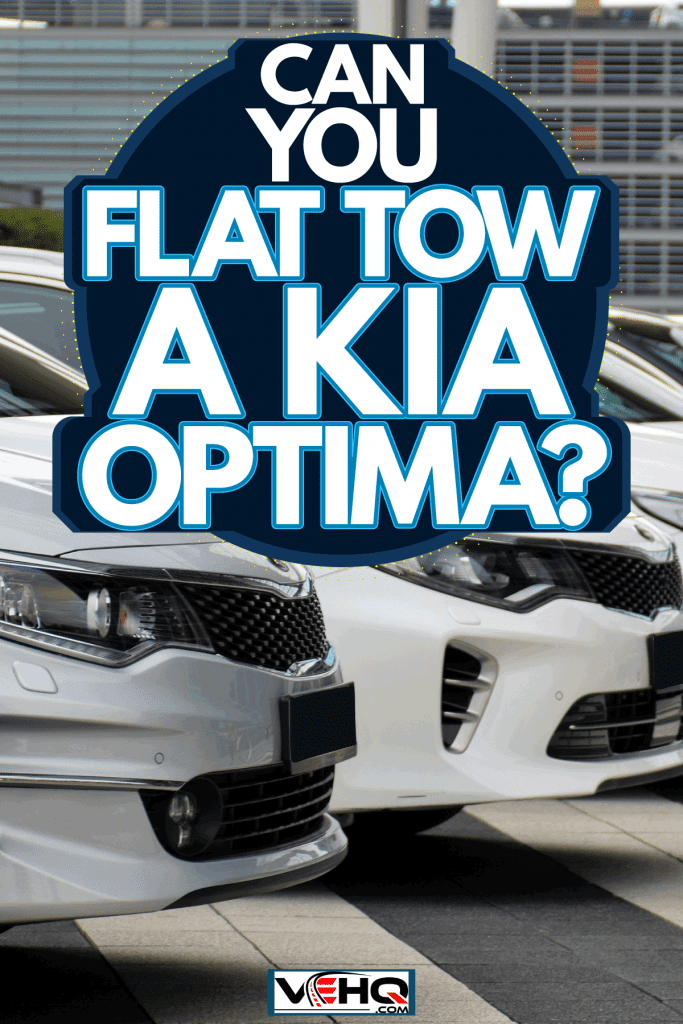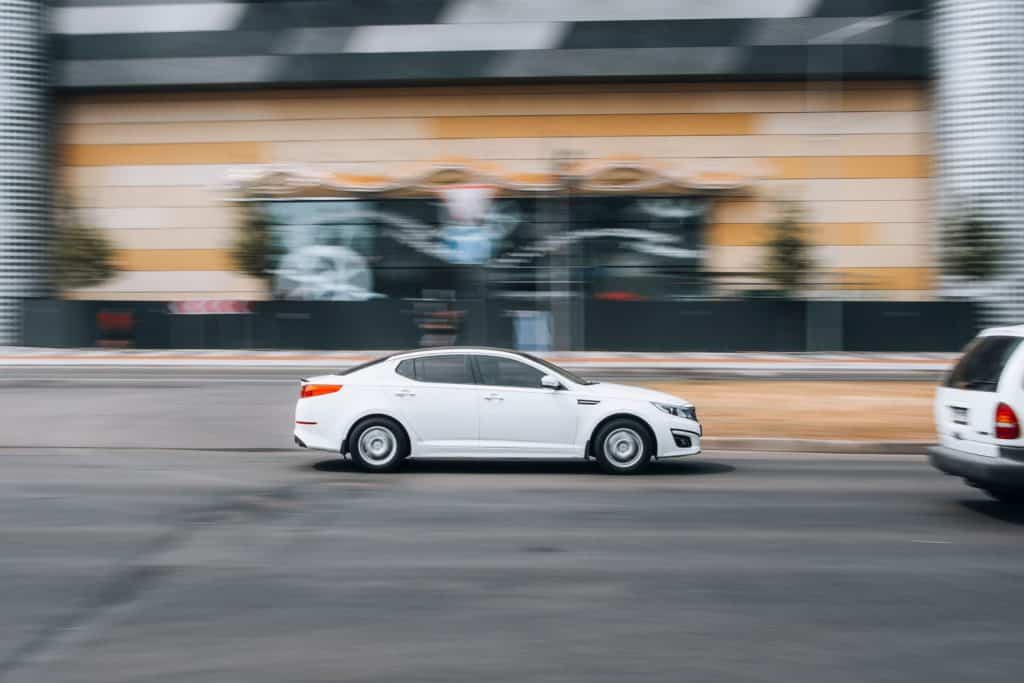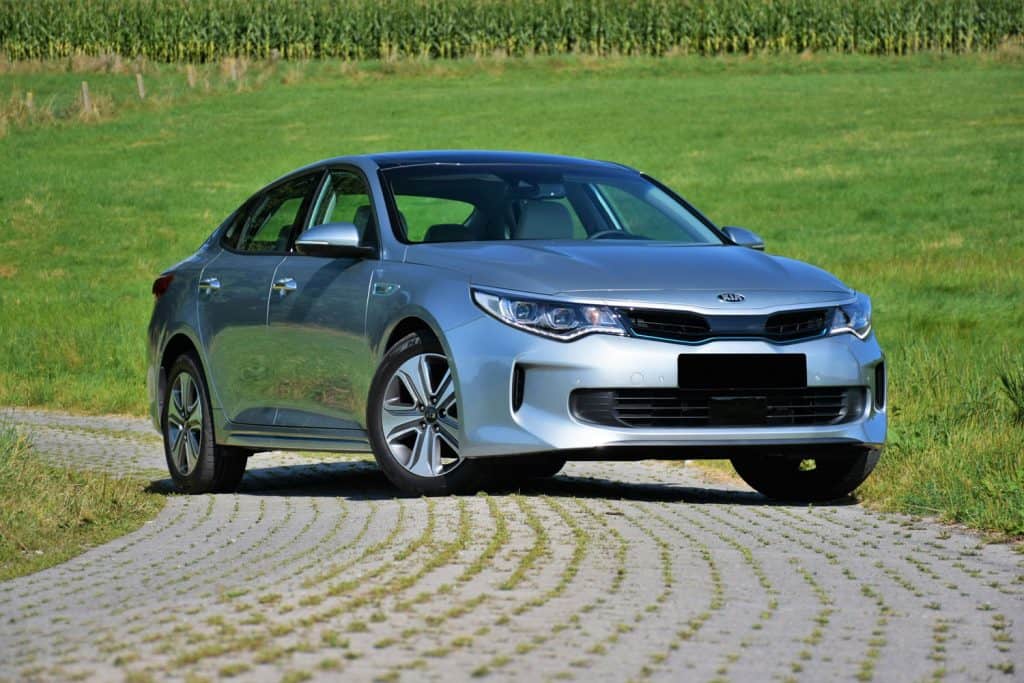If you are thinking of bringing a smaller vehicle with you on an upcoming RV trip, you might have considered flat towing. Not all model vehicles can be towed in this fashion, however. Should you want to take a Kia Optima on your trip, you'll want to know for sure if flat towing is an option. We researched the Kia Optima from numerous professional sources so that you will get a definitive answer here.
The Kia Optima cannot be flat towed. These vehicles are front-wheel drive or all-wheel drive, with both configurations only being offered in an automatic transmission. Flat towing them will cause the transmission to get too hot, thus doing irreversible damage to this vital component.
Now that we know that we cannot flat tow a Kia Optima, we'll look at the reasons that you shouldn't flat tow this vehicle. You might be curious if flat towing is bad for your vehicle or if you can flat tow an automatic vehicle in neutral. Does towing a car behind an RV put miles on it? What kinds of Kias can be safely flat towed? Keep reading for the answers to these questions and more.

Why you shouldn't flat tow the Kia Optima
Getting your smaller vehicle safely to your destination can be as easy as knowing how to tow it. There are three different ways that you can tow a vehicle, and you must be confident that the one you choose is the one that is best suited for your vehicle. As we discussed earlier in this post, the Kia Optima is not able to be flat towed.

Flat towing will damage the transmission
Flat towing is also known as four down towing and dinghy towing. This is when you use a tow bar to connect the hitch of the tow vehicle to the receiver of the vehicle being towed. It was the most common form of towing at one point.
When almost all vehicles were manual transmissions, flat towing was the standard. Now, with automatic transmissions and CVTs, towing in this manner can damage the vehicles made today.
Towing the Kia Optima with all four wheels on the ground will make the transmission activate. But since the engine isn't running, the transmission has no way to cool itself. This will burn out the transmission of your Optima, which will have to be replaced.
Should you dolly tow your Optima?
This method of towing involves a tow dolly that is attached to the RV. The vehicle being towed is then lifted from one end, resulting in the wheels being elevated off the ground. This works best with front-wheel drive vehicles, as they can be easily and safely lifted into position.
Certain rear-wheel drive vehicles can be towed in this way, but they have to be able to be safely lifted with their rear wheels off the ground. Not every rear-wheel model can be towed in this fashion.
According to ETrailer, the Kia Optima can be dolly towed, so long as your model Optima has a front-wheel-drive configuration. Most Optima cars are front-wheel drive, but the model years beginning in 2021 have all-wheel drive as an option. Make certain that your Optima isn't all-wheel drive before you tow it in this fashion.
When in doubt, trailer towing will work
If your Optima cannot be safely towed by flat towing or dolly towing, you still have this option. Trailer towing will work with any wheel configuration or transmission assembly. The vehicle is driven onto a trailer and then secured into place. Since the wheels are immobile, the transmission won't be active.
This method of towing is perfect if you want an easy setup without having to worry about whether or not you will be doing expensive damage to your vehicle.
Is flat towing bad for your car?
If your vehicle is approved for flat towing, it's not necessarily bad for your vehicle. But it will put more wear and tear on certain parts of your car or SUV. We'll look more carefully at that aspect of flat towing ahead in this post.
But if you are flat towing a vehicle that is not approved to be towed in this manner, you are certainly damaging it. Transmissions need lubrication to be able to cool themselves down. If your wheels are in motion, your transmission (depending on your model vehicle) will still be working. This is despite your engine not being on.
Transmissions get lubrication from engines that are running. If the engine is off, the transmission will not cool and will overheat. A hot transmission will become damaged and possibly need to be replaced.
Can you flat tow an automatic car in neutral?
Towing a car with an automatic transmission can be tricky. While you might think it's ok to do so with the gears in neutral, we assure you that it's not. Placing the vehicle in neutral does not disengage the transmission. So if the geared wheels are in motion (the front wheels on a front-wheel-drive car, for example), then the transmission will still work and get heated.
If the engine is off, the transmission will still heat up but not have any way to cool itself down. So if you have an automatic vehicle that is a front-wheel drive, you most likely should be able to dolly tow it with the front wheels elevated. While there are some modifications you can make to your vehicle to allow for it, they can be rather extensive for the layperson. Consult your owner's manual before making plans, so you'll know for sure if this method is proper for your particular vehicle.
After consulting the manual, you can always decide to trailer tow your vehicle. This method of towing is safe for all passenger vehicles, without the risk of damaging the transmission.
Does towing a car behind an RV put miles on it?
Towing a car behind an RV won't put miles on it in the traditional sense. With the engine off, there won't be any engine miles to speak of. And as the geared wheels are elevated, you won't have odometer miles ticking up if you are dolly towing.
Aside from trailer towing, your towed vehicle will still get some wear and tear from being towed behind an RV. Your tires, whether one set or two, will be on the pavement. They get wear from spinning whether the engine is running or not. And your suspension system is still getting jostled along the highway, lessening its life with every mile.
If you frequently tow your vehicle behind an RV, keep that in mind when factoring in how soon to rotate those tires. And be aware that the shocks or struts might need to be examined at different mileage frequencies than outlined in your owner's manual.
Which Kia vehicles can you flat tow?

Kia vehicles that have a manual transmission are the ones that would most qualify for flat towing. If you have a Kia Forte, a Kia Rio, or a Kia Soul, you might be able to have them towed in this manner. These models have had manual transmissions available in previous model years.
But before you attach your Kia to a tow bar, consult your Kia owner's manual. If it doesn't state that you can flat tow your Kia, assume that you cannot. Then make other towing arrangements.
In Closing

Even though you cannot flat tow your Kia Optima, there are still options for towing it behind an RV. Becoming aware of the towing methods that are best for your vehicle can be found in your owner's manual.
Once you have decided on a towing method, you'll want to be sure that your tow vehicle can handle the extra weight. It's essential to understand your vehicle's limitations before you set out on your journey, as not following guidelines can damage your vehicles and put your safety at risk. Drive safe!
If you found this post on flat towing the Kia Optima to be helpful, we believe you'll enjoy reading the following automotive posts:
What's The Best SUV for Towing A Travel Trailer? [Including Six Recommendations]
Towing Capacity and Trailer Weight – What RV Owners Need to Know

Thanks for the information, we are interested in purchasing a Kia Optima and this definitely helped with my research!